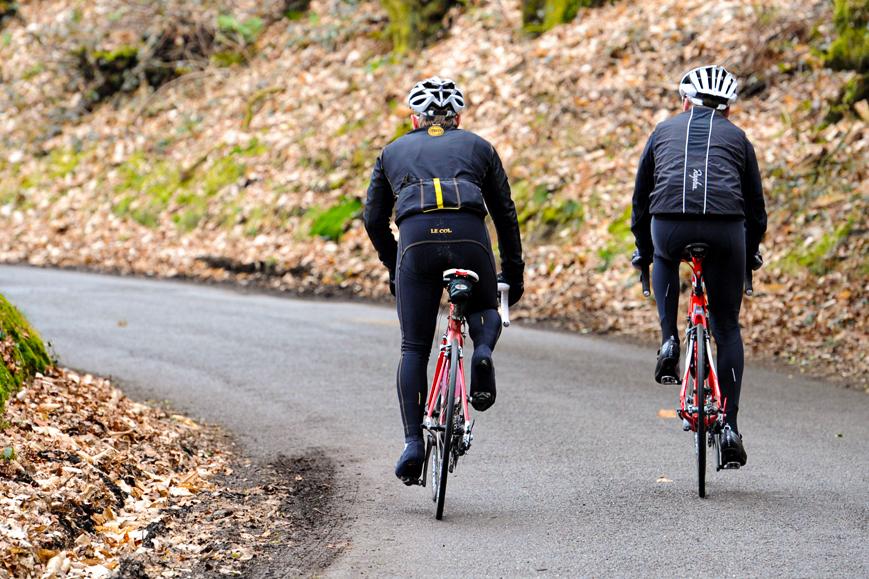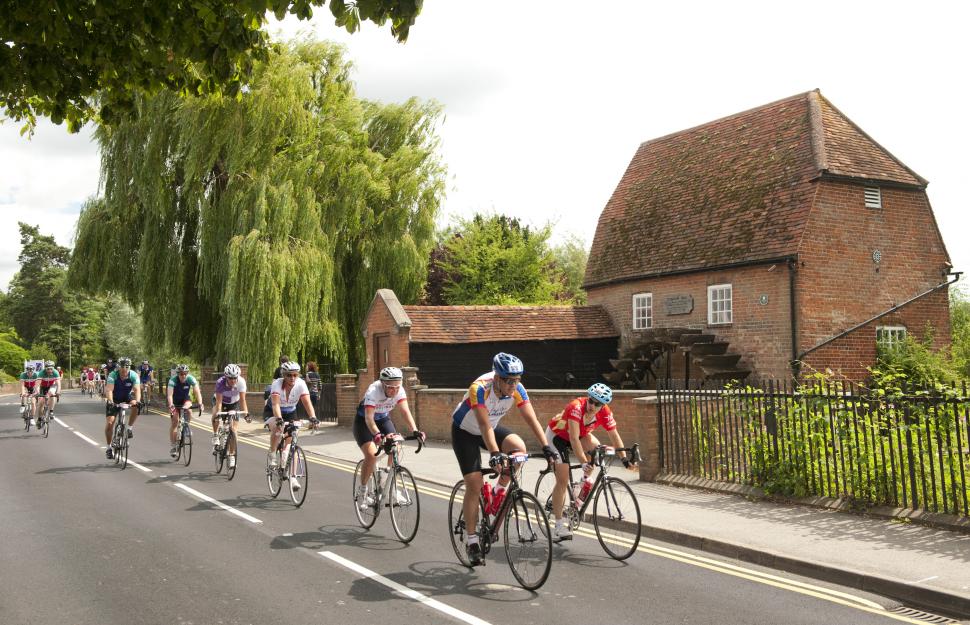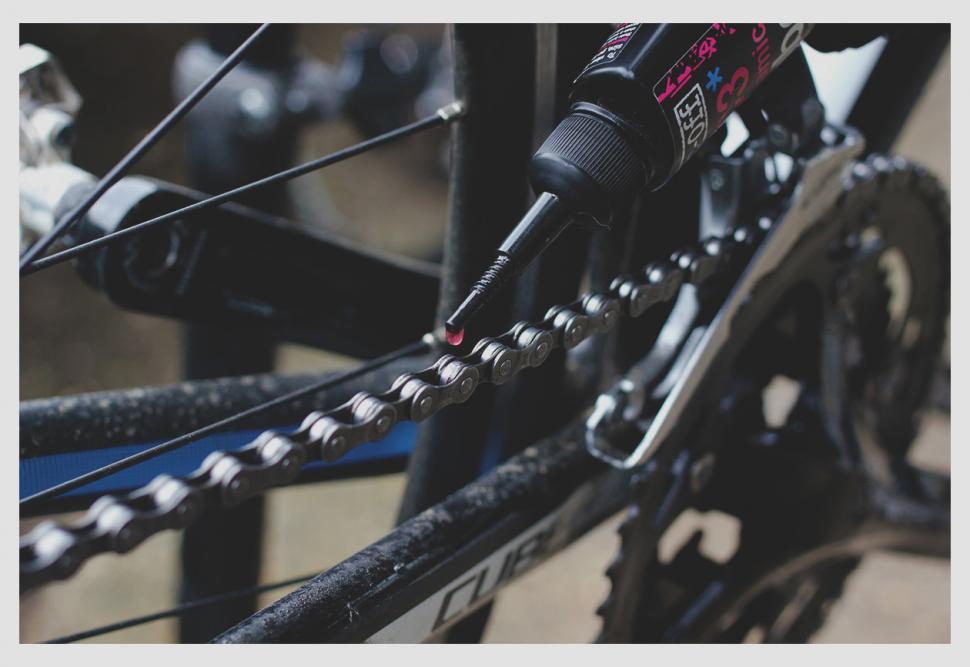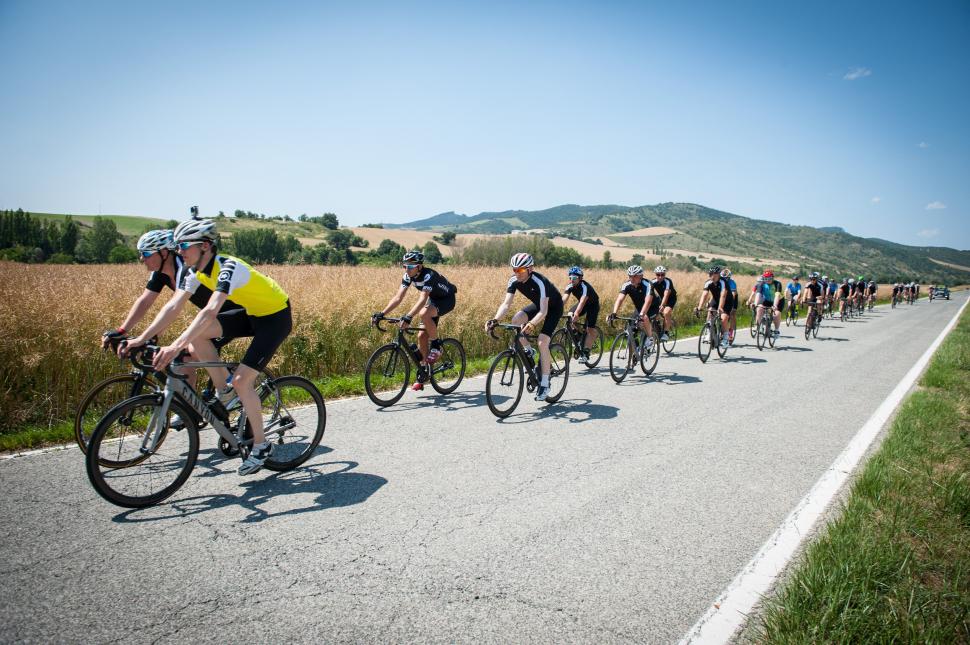- News
- Reviews
- Bikes
- Accessories
- Accessories - misc
- Computer mounts
- Bags
- Bar ends
- Bike bags & cases
- Bottle cages
- Bottles
- Cameras
- Car racks
- Child seats
- Computers
- Glasses
- GPS units
- Helmets
- Lights - front
- Lights - rear
- Lights - sets
- Locks
- Mirrors
- Mudguards
- Racks
- Pumps & CO2 inflators
- Puncture kits
- Reflectives
- Smart watches
- Stands and racks
- Trailers
- Clothing
- Components
- Bar tape & grips
- Bottom brackets
- Brake & gear cables
- Brake & STI levers
- Brake pads & spares
- Brakes
- Cassettes & freewheels
- Chains
- Chainsets & chainrings
- Derailleurs - front
- Derailleurs - rear
- Forks
- Gear levers & shifters
- Groupsets
- Handlebars & extensions
- Headsets
- Hubs
- Inner tubes
- Pedals
- Quick releases & skewers
- Saddles
- Seatposts
- Stems
- Wheels
- Tyres
- Health, fitness and nutrition
- Tools and workshop
- Miscellaneous
- Tubeless valves
- Buyers Guides
- Features
- Forum
- Recommends
- Podcast
 Southern-Spring-Sportive-2012-08-full size-2
Southern-Spring-Sportive-2012-08-full size-28 ways to get the best out of a sportive: top tips to get you through your first cycling event smoothly
Riding your first sportive or organised cycling event now these kind of things are allowed again? Here are some top tips from the road.cc team to help you get through your first sportive smoothly and ensure you enjoy the ride.
> The stuff they don't tell you about sportives
1. Pace yourself
Don’t go off too fast at the start. It's very easy to get excited and set off too fast, we know we've been there and done it ourselves. Instead set yourself a realistic speed goal and stick to it, and try and find other people riding at a similar pace and ride with them.
This is especially important if it’s your first sportive. It’s better to finish with a smile on your face and feel you could have ridden faster, than push too hard and struggle to get round. Once you’ve successfully completed your first event you can start entering more and increasing your pace as your confidence and fitness improves.
Sportives can bring out the competitive element in some people, but remember, it's not a race. There are always a few who go off in a hurry at the start and it can be tempting to chase them, but you can risk going too deep into your energy reserve and risk bonking well before the finish. Ignore them and ride sensibly at your own pace, and you’ll probably find you overtake those early pace setters later in the ride. Trust us, that happens all the time.
2. Be prepared
This is the UK and, as if you need reminding, the weather and road conditions can be very unpredictable. Sportives usually start early in the morning so it can be a chilly few miles with cold legs so ensure you wrap up to stay warm at the beginning of the ride. It’s a sensible idea to wear clothing that allows you to adapt to changeable weather conditions, and packing a lightweight gilet or waterproof jacket might be a smart option if the forecast isn’t looking great. Hilly sportives can be difficult to dress for; you get hot on the way up, and cold on the way down, so an extra layer you can easily remove as needed might work for you.
As well as clothing, it pays to be mechanically prepared as well. While some sportives do offer mechanical assistance, it’s best to be prepared and able to carry out the basic repair jobs yourself. So carry at least two spare tubes, tyre levers if you need them and some repair patches, and a mini pump. Most of those bits will fit inside a small saddle pack and the pump can go in a jersey pocket or be attached to the frame with a bracket. A decent multitool with a chain tool is an essential as well.
Also, consider carrying some cash in case you need to buy some emergency supplies and have the phone number of the emergency contact stored on your mobile phone.
- The best multi tools — get the right bits to fix your bike's bits
3. Eat and drink often
Most sportives have regular food and drink stops but it’s important to be prepared and take two full bottles of water or energy drink and put some food in your pockets, so you can ensure you keep your energy levels topped up during the ride.
Keep eating, you can easily burn thousands of calories riding a long sportive. The key is to eat little and often, you want to be drinking or eating something every 15 minutes, don’t wait until you’re hungry or thirsty as it’ll be too late then. If you’re not confident about eating while riding, there's nothing wrong with stopping, just pick the right moment. The top of the climb before a descent is preferable to scoffing some food at the foot of a climb.
- Tips for fuelling your sportive
As well as eating during the ride, ensure you get a good breakfast in before the start and preferably a few hours in advance of setting off so the body can digest the food. Porridge, muesli, toast, eggs and fruit are all good healthy choices but go with your personal preference, just be sure to lean towards as much carbohydrate as you can with a little protein.
And when you've successfully completed the event, don't forget to have some food soon after finishing. Anything from a recovery drink to a chocolate milk drink in the immediate aftermath of the event will start the recovery process and tide you over until you can get a proper meal.
4. Bike maintenance
We’ve seen too many cyclists either at the start of a sportive on a few miles into the event struggling with a mechanical problem that very often is down to a lack of maintenance and preparation. It pays to ensure your bike is in fine fettle before tackling a sportive so make sure you either get it checked over by your local bike shop, or do an inspection yourself. You want to make sure nothing is worn out or about to wear out such as tyre tyres or brake pads, the chain and sprockets are clean and well oiled, and the gears are shifting correctly.
- 19 of the best 2017 sportive bikes
5. Do I need to train?
That’s a question we hear often about people preparing for a sportive, and the answer is that it depends on the distance. It’s easy to be daunted by long distance sportives but most event organisers offer several route options so our advice is to start small and build up your confidence before going long, rather than getting yourself into the deep end.
When preparing for the sportive it’s not really necessary to have been able to ride the target distance in training. If you’ve entered a 75km sportive and you can ride 45km, you’ll be just fine with the extra distance, provided you pace yourself and remember to eat. If you’ve entered a very hilly sportive and you don’t normally ride some hills, then you might want to consider adding more hills to your regular rides for preparation.
If you do want to do some structured training then be sure to check out our six week training sessions right here.
6. Ride with friends or in a group
Riding a sportive with a group of friends can make for a much more enjoyable day out than riding on your own, and you’ll also be able to share the workload and help each other out when you hit a low point or struggle on the hills. If you’re riding regularly with the same people it can really help with your pacing on a sportive as well.
Groups will and do form in sportives, from several hundred cyclists to half a dozen. Sharing the workload can certainly up your average pace and many people do ride sportives faster than they would ride a similar distance on their own, thanks to the slipstream effect and generally the motivation for keeping up with other people.
There are a few golden rules for riding in a group and you can read all of them in our Guide to Riding in a Group.
7. Climbing, descending and cornering skills
Sportives can pitch you against unfamiliar roads with climbs, descents and corners that you’ve never ridden before. The important thing to remember with climbs is to pace yourself and to ensure you have adequate gears for the steepest gradients. For safe descending you want to make sure your brakes and tyres are in good working condition, you want to look well ahead down the road, pick the right line, ride to the conditions and try and stay calm and relaxed.
To help you out the three guides to cornering, descending and climbing below will help you out.
- 14 tips for better descending
- 10 top tips to becoming a better climber
- 11 tips for better cornering
8. Enjoy it
An easy one to forget this and some people seem to take riding sportives very seriously. Remember, it’s not a race, and the only person you’re competing against is yourself.
- Cycling survival — 13 beginner mistakes to avoid
Cafe wisdom: road.cc riders offer their top sportive tips
Amongst our more experienced road.cc readers/riders, a whole lot of sportive miles have been racked up between them. Here's some useful, whimsical and sometimes controversial comments they've made about sportives in previous versions of this article...
Grahamd said: "Consider raising funds for a charity, may help you remain motivated should the going get tougher than expected."
Chadders said: "Watch out for richard heads who thinks its the tour de france and elbow their way past and cut you up just to get in front of you!!! Other than that enjoy it."
Morat said: "Don't forget to eat so many gels and energy bars that you put on 4lbs during the day."
andyp said: "Put your gel wrappers in your pocket and take them home, rather than distributing them liberally around the countryside."
DaveE128 said: "When considering whether your gearing is ok for the steepest hills, I'd suggest ensuring that you can get up it at an efficient cadence without going too far beyond your aerobic threshold (simplest measure - can you keep talking in full sentences between breaths?) In my experience, having to grind up a hill at a low cadence can reduce your endurance and make you feel a lot worse later in the ride. I have seen a lot of people walking hills on sportives because their gearing is too high. With road cycling shoes on, that's not my idea of fun!"
bechdan said: "Dont book an event the day after the clocks change then forget to change the clocks."
tritecommentbot said: "Try not to shag anyone at the side of the road." https://road.cc/content/news/218865-cyclist-complete-helmet-spotted-having-sex-roadside-bushes-london
David worked on the road.cc tech team from 2012-2020. Previously he was editor of Bikemagic.com and before that staff writer at RCUK. He's a seasoned cyclist of all disciplines, from road to mountain biking, touring to cyclo-cross, he only wishes he had time to ride them all. He's mildly competitive, though he'll never admit it, and is a frequent road racer but is too lazy to do really well. He currently resides in the Cotswolds, and you can now find him over on his own YouTube channel David Arthur - Just Ride Bikes.
Latest Comments
- chrisonabike 13 min 38 sec ago
Yes - or 4. Either give up some of your paved frontage front garden (ha) for a cycle path, or accept a narrower road and less car parking (perhaps...
- HoarseMann 17 min ago
wot no radar? good job they're on a black friday special at the mo...
- Bungle_52 28 min 19 sec ago
Tweak no 1 then. The tag would need to beep at around 15mph getting more frequent as it approaches 20. It would come with an advisory note to...
- AidanR 49 min 14 sec ago
Sorry, but I have little sympathy for Wiggins. Per the latest set of accounts (2018), by far the biggest asset was a director's loan to Wiggins. In...
- mark1a 1 hour 17 min ago
That will be along in a week or so in the annual reboot of the "All I want for Christmas is... not this" article along with the Park Tool pizza...
- quiff 1 hour 30 min ago
For that money, I'd go to Matthew Sowter - https://www.saffronframeworks.com/
- hawkinspeter 1 hour 37 min ago
The problem with most jeans (i.e. not cycling designed ones) is that they've got the seam where it can intefere/chafe with the saddle. Also, cotton...
- hawkinspeter 1 hour 41 min ago
Why do the police have to wait for the council to install CCTV cameras? Can't they go and put one there themselves - it doesn't even have to be a...
- mdavidford 2 hours 9 min ago
I'm not sure commercial success is even particularly high on his list of priorities for it - it's much more about the leverage it gives him for...
- the little onion 5 hours 26 min ago
Rather artistic photo of this (driverless) car that has ended up on its roof on a dead straight road in Bradford....




Add new comment
18 comments
Watch out for feed stations. On some sportives they can be a good place to exchange suffering or have a chat with the marshals. However in something like PRL100 you may find yourself queuing for longer than you'd like and breaking your rhythm.
I did my 2nd Ride London on a no-stop strategy for that very reason using a 3l Cameback and more gels than your average high street hairdresser.
On that note don't be surprised if you can't fill up a camelback at a feed station - they are usually set up only fill up bottles.
A pump in a jersey pocket is best avoided, if one has an incident a pump can contribute to a back/rib injury, only put soft stuff in jersey pockets. Buy a pump with a frame mount.
Cannot stress this enough, I once slipped when walking in cleats wearing my cycling jacket with a multitool in the rear pocket, must have fallen heavily on it and the bruising had to be seen to be believed, entire back black and blue from shoulderblades to hips, and a friend of a friend had to have his spleen removed after a motorcycle accident in which he came down on a disc lock he was carrying in a pocket. Rear pockets for tubes, gels and gilets only now, all tools in saddle pack.
Hmm, now you have got me thinking about my hiplok !
Does give me the heebie-jeebies when I see people with them to be honest, particularly if worn with the lock part positioned over a hip ready to go into the bone. Also, if you're sliding along the road at speed and the chain snags on something...sorry to be a Jeremiah and to be fair I've never heard of anyone being injured using one, but they do look a bit of a risk to me.
The whole thing is in a sleeve and I wear it above the hip on the side. I usually put it in the pannier unless there isn't much room.
I'm certainly going to be reviewing my use of it.
Know how to actually fix a puncture!
This is really obvious but I've seen it happen a few times... don't changed a puncture in the middle of a (usually country) road... be very aware of any sort of traffic 🤷🏻♂️
and as for horses...🙈
I've always found the best thing is to avoid sportives completely. Plot the route yourself and ride it either by yourself or with a bunch of mates who you know can ride in a group safely. Plan a cafe stop and eat real food. The rest of your 'how to get the most out of a sportive' are just tips regarding cycling in general, nothing specific about sportives in there.
That's all well and good for more experienced or confident cyclists, but not everyone has the confidence to plan and ride a route by themselves, or a group to ride with, particularly if they are new to cycling. I don't choose to ride them anymore either, but sportives have a place.
Well riders who don't have the confidence to plan and ride a route should consider joining a decent local cycling club that has regular group rides for different abilities. Not all clubs are good for beginners but they are out there.
Riders who arent confident, are most unlikely to want join a cycling club as club rides thrust you in to an environment where it feels everyone else knows everyone but you & what they are doing and you are left feeling like a gooseberry,and clubs can feel clique, and even for beginners, rides are pitched at average speeds way beyond most beginner capabilities.
On most sportives, that most club riders avoid thank goodness, you dont feel like a no nothing rider,most people are friendly and wont make you feel left out, and you can ride at a pace you are comfortable with.
That sounds like a rather outdated stereotype and is certainly not like any of the clubs I'm familiar with. Clubs vary hugely, just like people.
Although I recognise Pilot Pete's view (I almost always ride solo), many people are motivated by an event on a specific day and the prospect of completing something tough that they may not attempt on their own.
That may be your experience and it can be true in quite a few clubs but there are many clubs that cater for beginners, I am a member of one that welcomes new riders and has more than one ride a week that goes at the pace of the slowest rider with no pressure and I know of a few others that have a similar policy so whilst you paint a negative picture, new cyclists should not be discouraged from seeking one out because if you find a good one then it really can make riding more fun and a local sportive does not come along every weekend, but like anything in life finding the right one for you may take more than one attempt.
One important thing not mentioned so far is that many riders in Sportives are not used to group riding and so extra caution needs to be taken when overtaking. People may ride in large groups straddling the road making it difficult to overtake or just pull out to overtake without checking behind. Call out "Cyclist behind" or similar when overtaking and generally be very careful, especially on descents and steep climbs. Many will act unpredicatably. There are also the speed kids who want to break records and just charge down the outside, so do check behind before you pull out.
Saw this in particular on PRL 2019. The 100 mile course merged with the 46 mile course for the last 20? miles or so and carnage ensued with the (wannabe at this point 4hrs in) speed kids weaving in and out of the Sunday bimblers.
In an ideal world there would have been some aggressive marshalling keeping slower peeps on the left but probably an impossible task.
I saw at least 3 or 4 crashes at Velo Birmingham simply caused by riders who couldn't ride in groups properly or safely. Just riding into other bikes or clipping wheels, including one,which was uphill where no one was riding faster than 10mph.
Which would be comical expect people did get hurt, bikes were broken and some had to abandon the ride as a result.
You summed it up precisely! Thanks.
It's been a hard and continuing road over the last two years to find somewhere / some group to ride with that I could fit in with in terms of my fitness / ability level.